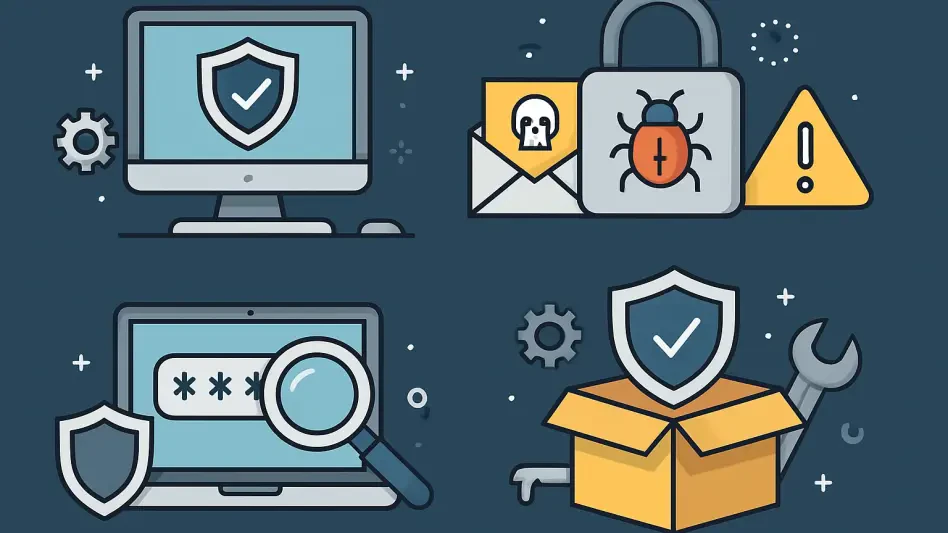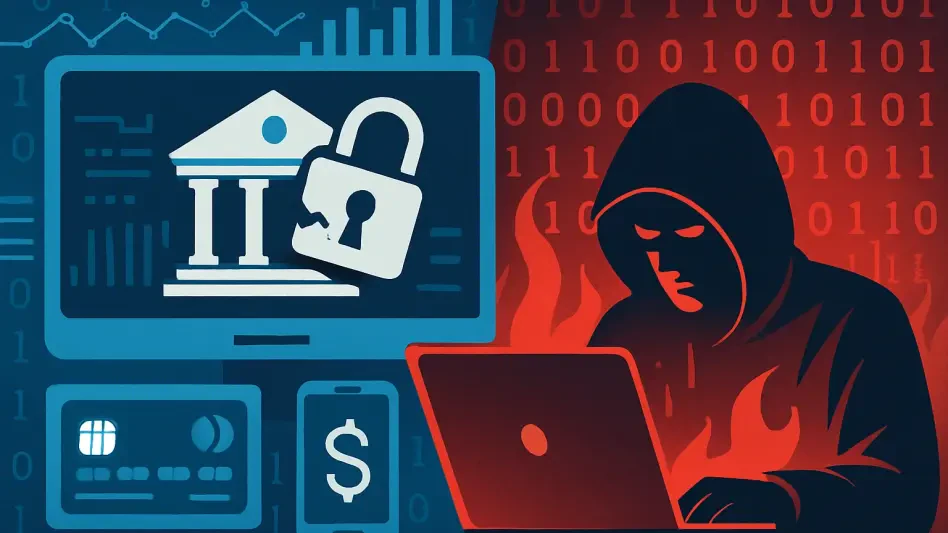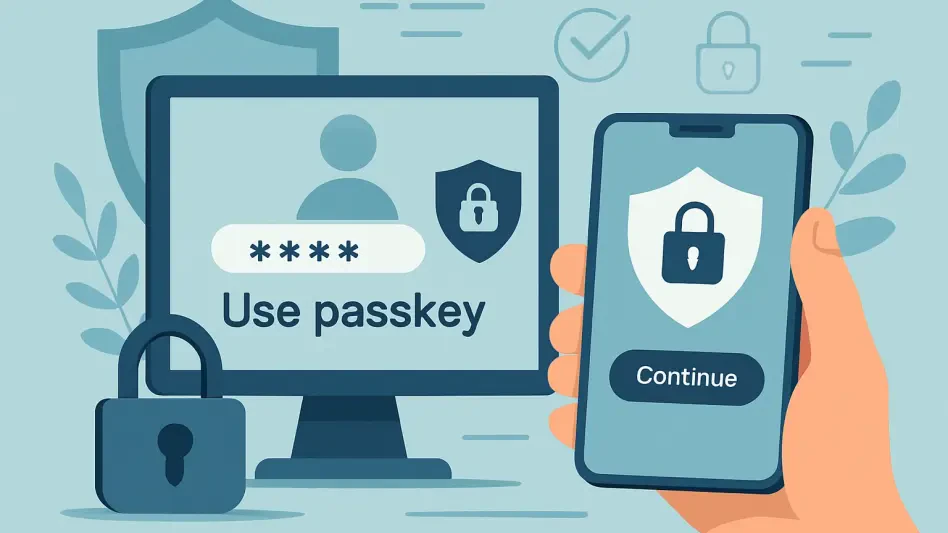In 2025, Chief Financial Officers (CFOs) will face an increasingly complex cybersecurity landscape. As cyber threats evolve, CFOs must prioritize and address the most significant risks to safeguard their organizations’ financial health. This article outlines the key cybersecurity priorities for CFOs, focusing on the most pressing threats and effective mitigation strategies.
Ransomware: A Persistent Threat
Evolving Tactics and Financial Impact
Ransomware continues to be a formidable challenge for organizations. Cybercriminals are constantly refining their methods to penetrate systems and extort money by threatening to expose sensitive data. These attacks have far-reaching repercussions, not only financially in the form of ransom payments but also through business interruptions and damage control costs due to reputational harm.
Proactive measures are crucial to counter these evolving threats effectively. Experts recommend a defense strategy that includes multi-layered security measures, robust business continuity planning, and regular audits. Implementing these strategies can help organizations manage ransomware attacks more effectively and minimize their impact. However, the continuous adaptation of these measures is necessary to keep up with the evolving tactics of cybercriminals.
Proactive Defense Measures
To mitigate ransomware effectively, organizations must take proactive steps that go beyond basic security measures. Multi-layered security involves implementing firewalls, antivirus software, intrusion detection systems, and regular patch updates. Business continuity planning is essential to ensure that operations can continue even in the event of an attack. This includes regular backups of critical data and disaster recovery plans.
Regular audits and assessments of the organization’s cybersecurity posture are also crucial. These audits help identify vulnerabilities that cybercriminals could exploit. By addressing these vulnerabilities promptly, organizations can strengthen their defenses against ransomware. Additionally, training employees to recognize and respond to phishing attempts and other common tactics used to deploy ransomware is vital. By fostering a culture of cybersecurity awareness, organizations can reduce the risk of successful attacks.
Cyber Extortion: Beyond Ransomware
Understanding Cyber Extortion Schemes
Cyber extortion is a growing threat where attackers compromise an organization’s systems, data, or networks and demand a ransom to prevent further damage and return to normal operations. This goes beyond standard ransomware attacks, incorporating other dangerous and evolving tactics. These schemes can include data theft, distributed denial-of-service (DDoS) attacks, and threats to publicly release sensitive information.
The financial and operational impact of cyber extortion can be severe. Organizations may face lost revenue due to operational disruptions, regulatory fines for failing to protect sensitive data, and the potential costs of paying ransoms. Moreover, the reputational harm resulting from a successful attack can be long-lasting, affecting customer trust and investor confidence. Understanding the various forms of cyber extortion and their implications is essential for CFOs and their teams.
CFOs’ Role in Mitigation
CFOs play a crucial role in mitigating the effects of cyber extortion. Collaborating with Chief Information Security Officers (CISOs) and legal departments is essential for effective decision-making and resolution of these events. CFOs must ensure that their organizations have comprehensive incident response plans in place. These plans should outline steps for containing the breach, communicating with stakeholders, and restoring normal operations.
Additionally, CFOs should be involved in budgeting for cybersecurity measures, including investments in advanced threat detection and response tools. Quantifying potential cyber threats in monetary terms helps CFOs prioritize cybersecurity initiatives and allocate resources effectively. Furthermore, CFOs need to stay informed about the latest trends and tactics in cyber extortion to anticipate and prepare for emerging threats. By taking a proactive approach and fostering strong collaboration within the organization, CFOs can help mitigate the risks associated with cyber extortion.
Third-Party Risks: Managing Interconnected Relationships
Assessing Third-Party Cybersecurity Posture
In today’s interconnected business environment, CFOs must be vigilant about the cybersecurity risks posed by third parties such as suppliers, contractors, and service providers. The complexity of modern partner relationships means that a thorough understanding of a third-party supplier’s cybersecurity posture is necessary to mitigate risks effectively. This requires assessing their security measures, compliance with industry standards, and incident response capabilities.
The interconnected nature of these relationships means that a breach at a third-party provider can have significant repercussions for the entire organization. The CrowdStrike outage of 2024 exemplified the risks associated with integrating significant service providers into everyday operations. Such incidents highlight the importance of conducting rigorous assessments of third parties to understand their security protocols and potential vulnerabilities. By doing so, organizations can place themselves in a better position to manage and reduce these risks.
Developing Mitigation and Response Plans
To address third-party risks effectively, organizations must develop proactive mitigation and response plans. This includes creating vendor risk management programs that outline the criteria for selecting and monitoring third-party providers. Regular assessments and audits of these providers help ensure they adhere to the organization’s security standards. Furthermore, establishing clear contractual obligations regarding cybersecurity and incident reporting is essential for holding third parties accountable.
Organizations should also develop incident response plans that specifically address third-party breaches. These plans should outline the steps for communicating with the affected provider, containing the breach, and mitigating the impact on the organization. Additionally, involving third parties in regular cybersecurity training and awareness programs can help raise the overall security posture of the supply chain. By taking these proactive measures, CFOs can better manage the risks associated with third-party relationships and protect their organizations from potential breaches.
SEC Requirements: Ensuring Compliance
New Cybersecurity Disclosure Requirements
The U.S. Securities and Exchange Commission (SEC) has introduced new cybersecurity disclosure requirements to provide investors with critical information about a company’s cyber risk incidents and mitigating processes. These requirements are designed to protect public company investors, as cybersecurity events can substantially impact financial health. The adopted amendments call for increased transparency and accountability in reporting cyber incidents.
One of the key requirements is the disclosure of material cyber incidents in a public 8-K filing within four business days. This mandates that organizations promptly report significant cyber incidents that could impact their financial health, ensuring that investors are informed in a timely manner. These disclosures include details about the nature of the incident, its impact on the organization, and the measures taken to mitigate the damage. By providing this information, the SEC aims to enhance investor protection and promote better cybersecurity practices.
Collaboration for Effective Reporting
To meet the SEC’s cybersecurity disclosure requirements, CFOs must work closely with their cybersecurity counterparts to ensure proper processes are in place for timely and accurate reporting. This collaboration is essential for identifying material cyber incidents, assessing their financial impact, and communicating the necessary information to investors. CFOs should also stay informed about the latest regulatory developments and ensure that their organizations comply with the new requirements.
Additionally, organizations should establish robust internal reporting mechanisms to facilitate the prompt identification and escalation of cyber incidents. This involves training employees to recognize and report potential threats and creating channels for clear communication between different departments. By fostering a culture of transparency and accountability, organizations can ensure that they meet the SEC’s disclosure requirements and provide investors with the information they need to make informed decisions.
Employee Access Controls and Insider Threats
Implementing Stringent Access Controls
Insider threats, whether intentional or accidental, pose a significant risk to organizational cybersecurity. Implementing stringent employee access controls is imperative to mitigate these threats. Best practices include developing robust access controls, understanding network data and access points thoroughly, and maintaining clear communication with employees about cybersecurity protocols.
Models like zero-trust security and the least privilege principle help minimize risk by assuming no device on the network is trustworthy and limiting access based on necessity. This means that even if an insider’s credentials are compromised, the potential damage is limited. Regularly reviewing and updating access controls is also essential to adapt to changing roles and responsibilities within the organization. By taking these measures, organizations can significantly reduce the risk posed by insider threats.
Continuous Monitoring and Updates
Continuous monitoring and updates to internal cybersecurity strategies are vital for effective protection against insider threats. This involves implementing real-time monitoring tools to detect unusual or suspicious activity within the network. By identifying potential threats early, organizations can take swift action to prevent data breaches and other security incidents.
Maintaining clear communication with employees about cybersecurity protocols is also crucial. Conducting regular training sessions and awareness programs helps employees understand the importance of cybersecurity and their role in maintaining it. Additionally, organizations should establish clear policies for reporting suspicious activity and ensuring that employees feel comfortable doing so without fear of retaliation. By fostering a culture of vigilance and accountability, organizations can effectively mitigate the risks associated with insider threats.
Ongoing Investments: Staying Ahead of Threats
Continuous Investment in Cybersecurity Tools
Given the constantly evolving cybersecurity landscape, continual investments in the latest tools and services are necessary to stay ahead of threats. Organizations should consider areas such as cybersecurity insurance, incident response plans, employee training, and data loss prevention as ongoing budgetary items. By allocating sufficient resources to these areas, organizations can enhance their overall security posture and better protect themselves against emerging threats.
Cybersecurity insurance provides financial protection in the event of a breach, covering costs such as legal fees, notification expenses, and ransom payments. Incident response plans outline the steps for detecting, containing, and mitigating the impact of a cyber incident. Regularly updating and testing these plans is essential to ensure their effectiveness. Employee training programs help raise awareness about cybersecurity best practices and potential threats, reducing the likelihood of successful attacks.
Bridging Cybersecurity and Financial Risk
By 2025, Chief Financial Officers (CFOs) will find themselves navigating a cybersecurity landscape that’s more complicated than ever before. As cyber threats continue to develop and grow in sophistication, CFOs will need to focus on identifying and mitigating the most significant risks to protect their companies’ financial well-being. This is crucial as financial cyber crimes can lead to substantial losses. This article delves into the essential cybersecurity priorities CFOs should maintain, highlighting the most critical threats and offering effective strategies to counteract them.
Furthermore, cyber-attacks targeting finance are becoming more frequent and advanced, meaning traditional methods of protection may no longer suffice. CFOs must work closely with Chief Information Security Officers (CISOs) and IT teams to develop robust cybersecurity frameworks that include proactive threat detection, rapid response protocols, and ongoing employee education on cyber hygiene. They should also invest in state-of-the-art technologies, such as advanced encryption and multi-factor authentication, to secure financial data. By prioritizing these strategies, CFOs can help safeguard their organizations’ financial health in an ever-evolving digital threat landscape.







